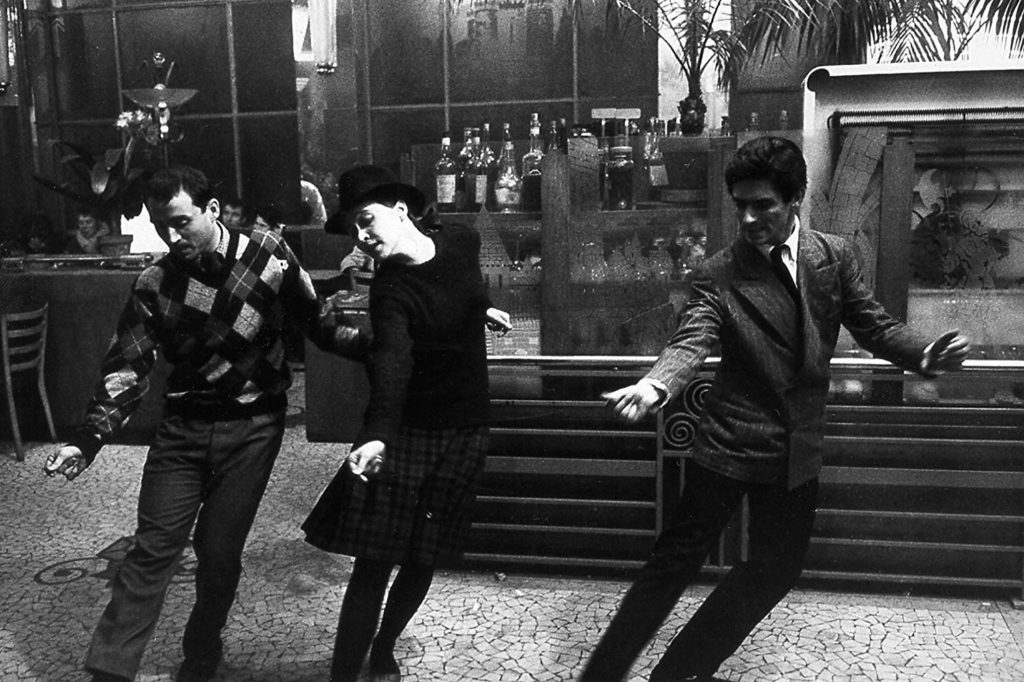
I’m a week bit late with my (technically) November blindspot selection, in which I watched Jean-Luc Godard’s 1964 film Bande à part, known in North America as Band of Outsiders. Franz (Sami Frey) and Arthur (Claude Brasseur) are two friends who come up with a plan to steal a large stash of money at a villa in Joinville, outside of Paris. They enlist the help of Odile (Anna Karina), a woman who lives in the villa with her aunt Victoria (Louisa Colpeyn) and was the one to originally tell Franz in an English class they took together. As the two criminals plan their heist, they each develop romantic inclinations towards Odile.
Since my time in film school, during which many of his films were part of the curriculum, I have had a love/hate relationship with French New Wave pioneer Jean-Luc Godard. While I can appreciate this film critic, turned filmmaker’s contributions from a theoretical and historical viewpoint, very few of Godard’s films have truly connected with me. Probably the closest would be his 1960 debut film Breathless, the only Godard film I’ve seen more than once, and even that film has elements that get to me.
As such, it is probably no surprise that I couldn’t really fully connect with Bande à part, which is another one of Godard’s notable contributions to the French New Wave era of the 1960s. On the surface, Bande à part can be described as a heist film, with a romantic triangle thrown in. However, the heist that the film is built around is almost secondary to the plot as a whole and film is ultimately a series of individual moments.
Probably the most well known of these moments is a scene around the midway point of the film, which has the three protagonists dancing in the middle of the restaurant. This is definitely an interesting sequence in the film, since there are moments when the music would stop, as the film’s off-screen narrator describes the thoughts of each character. As this happens, the choreographed dance moves are still being preformed, completely with sound effects. In a similar fashion, there is another moment in the film that has a literal minute of silence, where all sound in the film cuts off for an entire minute, just to show how long a minute of silence can be.
Even though I personally didn’t fully connect with Bande à part, the film can be described as one of the more influential films in Godard’s filmography. In fact, it can be argued that the dancing scene in the film was the basis for a similar scene in Quentin Tarantino’s Pulp Fiction. In fact, Tarantino even named his production company A Band Apart.
While part of me is glad I was able to check off another one of Jean-Luc Godard’s films, I still have yet to find a film of his that I truly care about.





